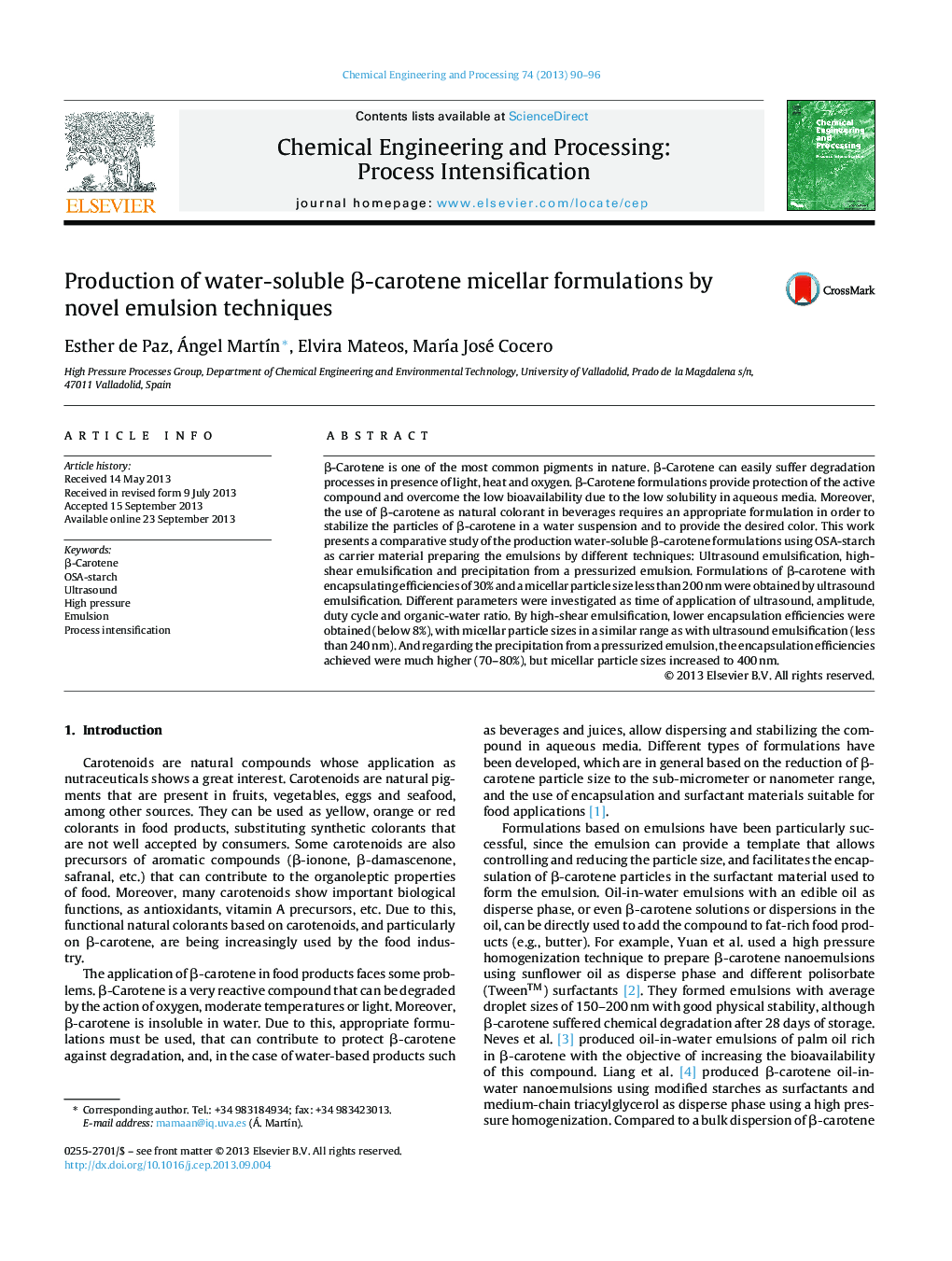| Article ID | Journal | Published Year | Pages | File Type |
|---|---|---|---|---|
| 7090158 | Chemical Engineering and Processing: Process Intensification | 2013 | 7 Pages |
Abstract
β-Carotene is one of the most common pigments in nature. β-Carotene can easily suffer degradation processes in presence of light, heat and oxygen. β-Carotene formulations provide protection of the active compound and overcome the low bioavailability due to the low solubility in aqueous media. Moreover, the use of β-carotene as natural colorant in beverages requires an appropriate formulation in order to stabilize the particles of β-carotene in a water suspension and to provide the desired color. This work presents a comparative study of the production water-soluble β-carotene formulations using OSA-starch as carrier material preparing the emulsions by different techniques: Ultrasound emulsification, high-shear emulsification and precipitation from a pressurized emulsion. Formulations of β-carotene with encapsulating efficiencies of 30% and a micellar particle size less than 200 nm were obtained by ultrasound emulsification. Different parameters were investigated as time of application of ultrasound, amplitude, duty cycle and organic-water ratio. By high-shear emulsification, lower encapsulation efficiencies were obtained (below 8%), with micellar particle sizes in a similar range as with ultrasound emulsification (less than 240 nm). And regarding the precipitation from a pressurized emulsion, the encapsulation efficiencies achieved were much higher (70-80%), but micellar particle sizes increased to 400 nm.
Related Topics
Physical Sciences and Engineering
Chemical Engineering
Process Chemistry and Technology
Authors
Esther de Paz, Ángel MartÃn, Elvira Mateos, MarÃa José Cocero,
